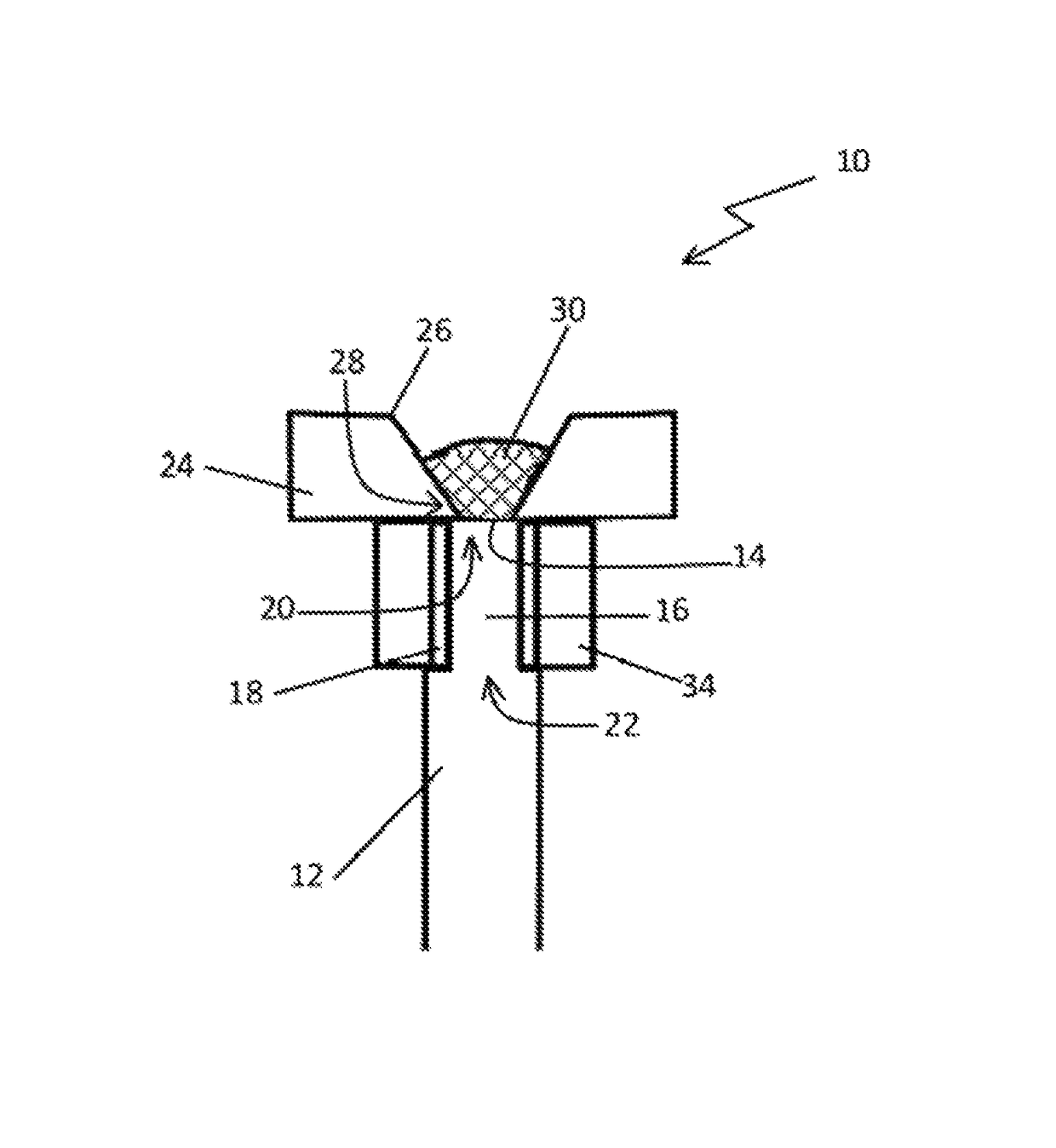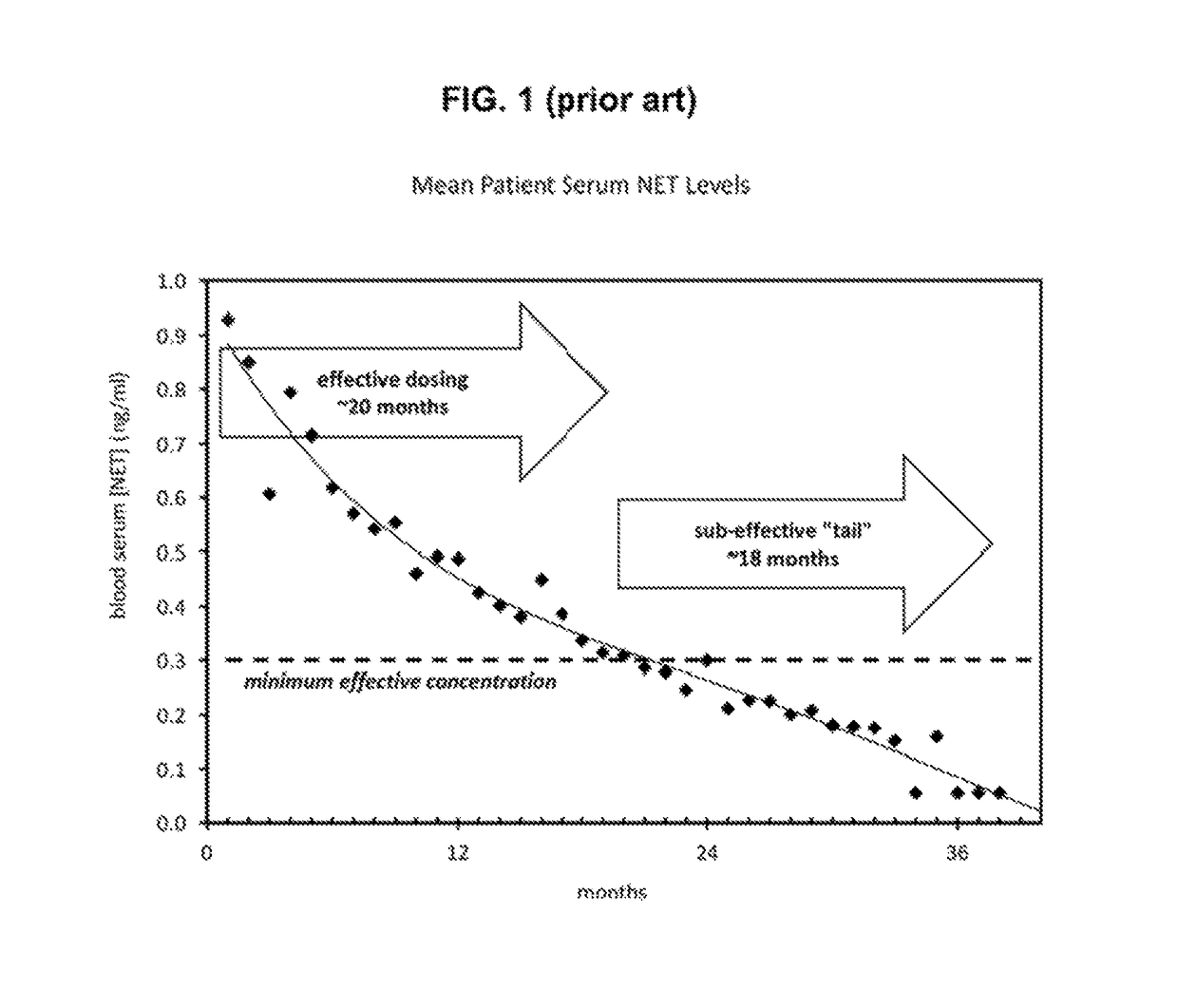Bioerodible contraceptive implant and methods of use thereof
a bioerodible, implantable technology, applied in the direction of prosthesis, drug composition, sexual disorder, etc., can solve the problems of shortening the regulatory pathway, affecting the safety of women's health, and affecting the safety of women's health, and achieve the effect of reducing the dos
- Summary
- Abstract
- Description
- Claims
- Application Information
AI Technical Summary
Benefits of technology
Problems solved by technology
Method used
Image
Examples
example 1
Monolithic Pellets: Effect of Pellet Diameter on Release Rate and Duration
[0209]Rod-shaped, substantially cylindrical monolithic pellets, having identical compositions but differing in diameter, were made using General Procedure A.
[0210]Composition: 85 wt. % etonogestrel (“ENG”), 3 wt. % phosphatidylcholine (“PC”), and 12 wt. % cholesterol (“CH”).
[0211]The pellets made were both 4 mm in length, with one pellet having a diameter of 1.7 mm (a “monolithic thin” type of pellet) and the other pellet having a diameter of 2.8 mm (a “monolithic thick” type of pellet). Drug release rate in 95.0% denatured ethanol (i.e., anhydrous ethanol denatured with 5 vol. % methanol and 5 vol. % isopropanol) and 5% deionized water was evaluated over a time period of about 30 minutes, as follows:
[0212]50.0 ml of the 95.0% ethanol dissolution medium were added to a 125 mL Erlenmeyer flask, which was then sealed with paraffin film. Two capillary tubes were inserted through the film and into the dissolution ...
example 2
Monolithic Pellets: Effect of Pellet Length on Release Rate and Release Duration
[0214]Two groups of rod-shaped, substantially cylindrical monolithic pellets, having identical compositions but differing in length, were made using General Procedure A.
[0215]Composition: 85 wt. % ENG, 3 wt. % PC, and 12 wt. % CH.
[0216]The pellets made were both 2.8 mm in diameter, with one pellet having a length of 4 mm and another pellet having a length of 6 mm. The dissolution profiles obtained using the methodology described in Example 1 are shown in FIG. 5. As may be seen in the figure, the two pellets released drug over a time period of similar duration, but the shorter pellets gave rise to a shallower slope for the decreasing rate of etonogestrel release, meaning that the release rate for the longer pellets decreased faster than that of the shorter pellets.
example 3
Core-Type Pellets: Release Rate and Duration
[0217]General Procedure B was followed to prepare pellets having a core of 85 wt. % ENG, 12 wt. % CH, and 3 wt. % PC, and a shell of 97 wt. % CH and 3 wt. % PC. The diameter of each core was 1.6 mm and each shell was 0.6 mm thick, giving a total pellet diameter of 2.8 mm. Pellet length was 4 mm. Drug release over time was evaluated in 95% ethanol as described in Example 1. Results are shown in the dissolution profile of FIG. 6 (see the curve corresponding to the pellet length of 4 mm).
PUM
| Property | Measurement | Unit |
|---|---|---|
| temperatures | aaaaa | aaaaa |
| wt. % | aaaaa | aaaaa |
| wt. % | aaaaa | aaaaa |
Abstract
Description
Claims
Application Information
 Login to View More
Login to View More - R&D
- Intellectual Property
- Life Sciences
- Materials
- Tech Scout
- Unparalleled Data Quality
- Higher Quality Content
- 60% Fewer Hallucinations
Browse by: Latest US Patents, China's latest patents, Technical Efficacy Thesaurus, Application Domain, Technology Topic, Popular Technical Reports.
© 2025 PatSnap. All rights reserved.Legal|Privacy policy|Modern Slavery Act Transparency Statement|Sitemap|About US| Contact US: help@patsnap.com



